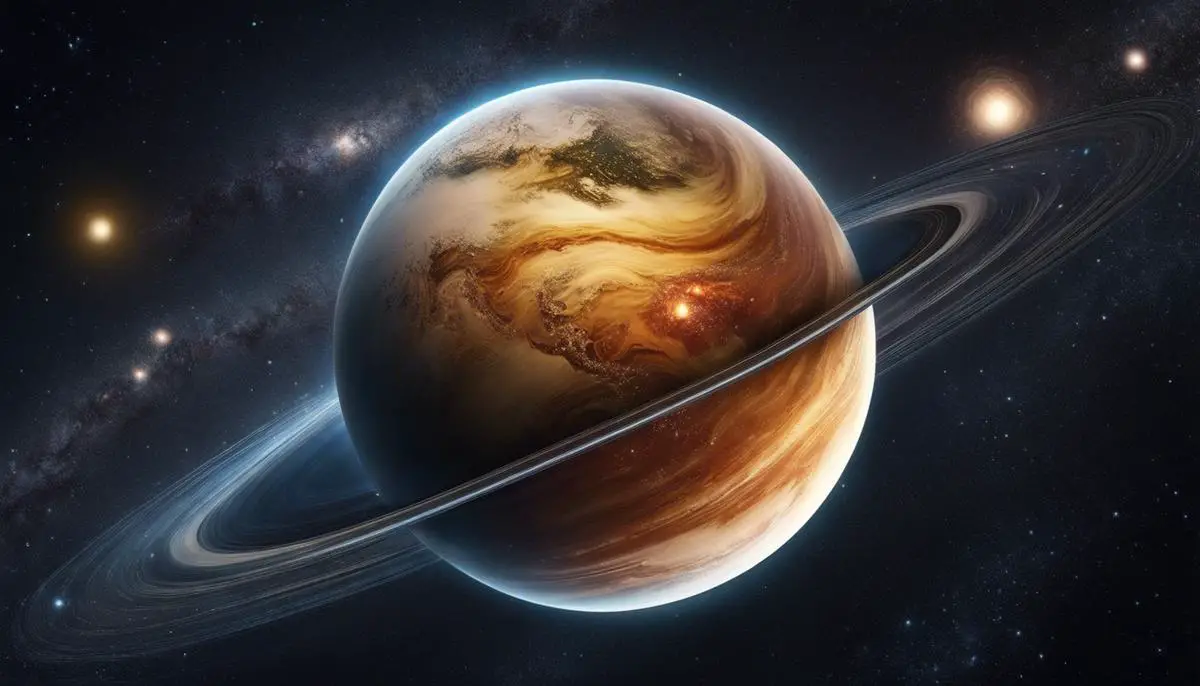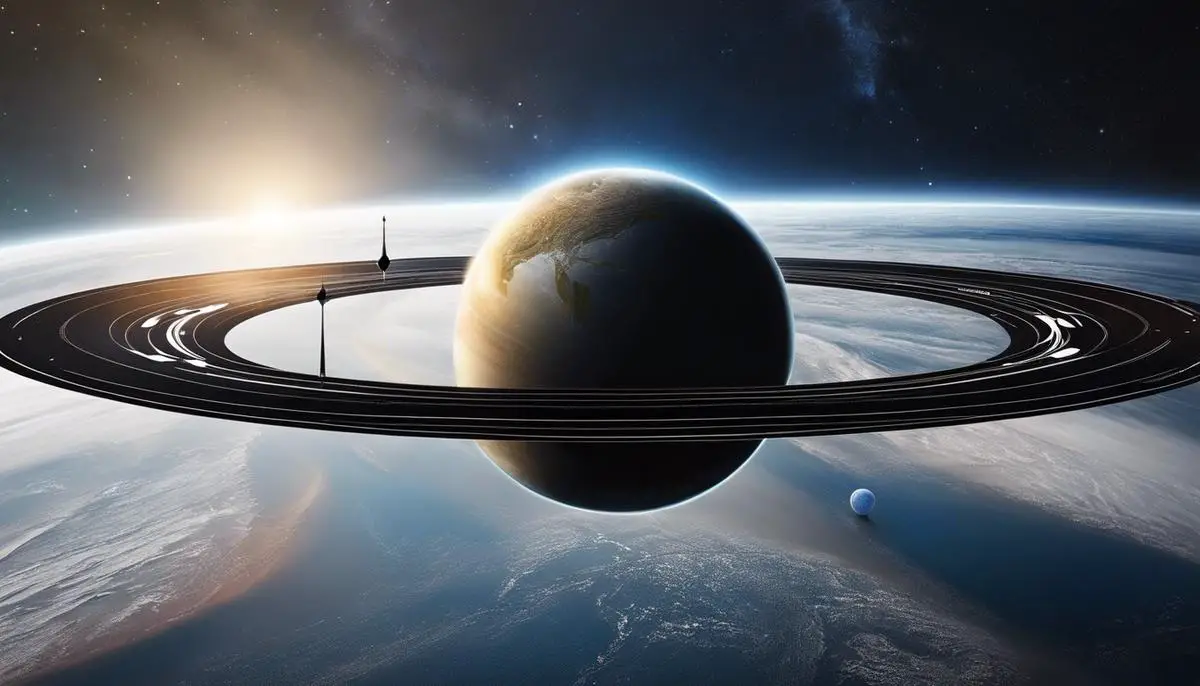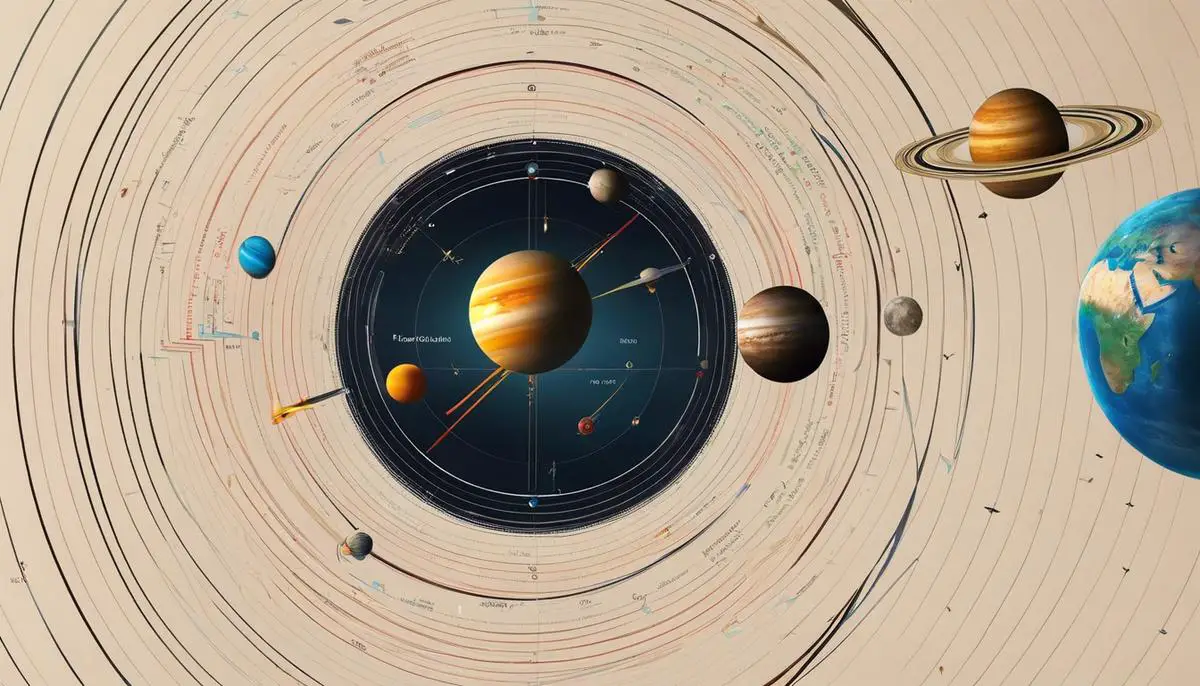The intricate dynamics of our universe are governed by a complex interplay of forces, with planetary rotation being a critical component of this ballet. The gifted dance of planets rotating on their axes is more than a celestial spectacle; it largely determines the length of a day on each planet, consequently influencing its climatic conditions, weather patterns, and potential for cultivating life. The dance varies in speed and style across the stage of the cosmos, from slow, languid turns to rapid spins, each contributing to a unique length of day and the distinct realities for life as we comprehend it. This discussion navigates the fundamentals of planetary rotation, the relationship shared with day length, and the implications of these rotations on inherent planetary conditions.
Fundamentals of Planet Rotation
Understanding Planet Rotation: An Unraveling Cosmic Mechanic
The marvels of our solar system are numerous and complex, yet fundamental concepts such as the rotation of a planet highlight the exquisite mechanics driving our universe. Planetary rotation arises from a celestial ballet, combining momentum conservation with gravitational interplay on a galactic stage. What follows offers an exploration into the intricacies of this essential astronomical phenomenon.
Defining Rotation
In astronomical terms, rotation refers to the spin of an object around its axis. Consider a spinning top. The object’s physical center, its axis, is static while the remaining body rotates– a similar occurrence happens in planets. The axis of rotation is the imaginary line through the poles around which a planet spins. The earth, for example, rotates around an axis that runs between the North and South Poles.
Origins of Rotation
Expounding upon conservation laws – universal holdouts such as energy and momentum – the origins of planet rotation become inherently discernible. During the birth of a solar system, the initial nebular cloud of gas and dust collapses due to inherent gravitational forces. As this cloud contracts, it retains its angular momentum leading to an increased rotation speed, akin to a skater pulling arms inward while spinning. This results in a flattened, spinning disk – from which planets form – and instills the planets with rotational motion around their own axes.
Contributory Factors
The speed and direction of a planet’s rotation are not random instances, but looking back at the broader context of solar system formation, they are consequential of the initial conditions of the protoplanetary disk and potential collisions during planet formation. Two discernible trends emerge with relevance to planetary rotation: most planets rotate in the counterclockwise direction and most planets’ axes of rotation are nearly perpendicular to the plane of their orbit.
Effect on Planet Environment
Understanding planet rotation also aids in comprehending many terrestrial features. As Earth rotates, it creates day and night cycles affecting climate patterns, weather, and biological behaviors. Rotational forces contribute to a planet’s shape, leading to an oblate spheroid instead of a perfect sphere. The rotational speed can indirectly affect the strength of a planet’s magnetic field.
The phenomena of atmospheric circulation, including trade winds and jet streams, are influenced by a planet’s rotation. Famously known as the Coriolis effect, this influence refers to subtle shifts in an object’s path due to Earth’s rotation—an essential consideration in meteorology for predicting weather patterns.
In total, planet rotation is not merely an isolated occurrence. It is a defining feature that helps shape the environment and life as we know it. Every spin offers a further testament to the cosmic pirouette that perpetually unfolds to drive the rhythms of the universe. It exemplifies how the smallest details can hold the most profound implications in the extraordinary field of astronomy.

Relationship between Planet Rotation and Day Length
How Planet Rotation Influences the Duration of a Day: A Closer Examination
Deepening our understanding of the universe commands a continuous study of the celestial bodies’ distinct properties, including their rotation. One of the most intriguing subjects in astronomy and celestial physics is the influence of planet rotation on the duration of a day.
Beginning with a fundamental concept, a ‘day’ in astronomical terminology refers to a single rotation of a planet about its axis. This is technically known as the sidereal day. However, for Earth and many other planets, the measurement of a day is often based on the solar day – the time it takes for the Sun to return to the same position in the sky. The distinction between these times, albeit a few minutes, emphasizes the influence of orbital revolution on a planet’s day length.
A vital concept related to planetary rotation speed and day length is the equator-polar difference. It’s a well-known fact that planets are not perfect spheres but exhibit a flattened shape at the poles, termed an oblate spheroid. This shape occurs due to the centrifugal force accompanying rotation, leading to a midsection bulge and polar flattening. These physical differences mean that the rotational speed at the equator is faster than at the poles, consequently affecting the perceived duration of a day at varying latitudes.
Further investigation into this astronomical phenomenon reveals that Earth’s tilt, or axial inclination, also contributes to the day length. The Earth’s tilt causes the Sun’s path across the sky to vary consequently affecting the day length through the changing seasons.
It’s noteworthy mentioning the significance of tidal friction, a consequence of gravitational interactions primarily between Earth and Moon, slowing earth’s rotation gradually and lengthening the duration of our day. This interaction, termed tidal locking, is also responsible for the Moon presenting only one face towards Earth.
Planetary rotation affects not only the duration of a day but has significant long-term effects on a planet’s geological and climatic evolution. Rapid rotation can cause a high geostrophic equilibrium with powerful wind patterns, altering the climate over millennia.
Rotation also plays a crucial role in the planet’s magnetic field generation. It’s believed that the Earth’s fast rotation fosters the dynamo effect that creates our geomagnetic field—an essential factor for maintaining life, as it helps shield the Earth from harmful cosmic radiation.
In conclusion, engaging in the comprehensive exploration of planetary rotation, and its relationship with the duration of a day, reveals the importance of this phenomenon in a broader context. It not only impacts our measurement of time but fundamentally influences a planet’s environment, climate, and even potential habitability. The interdependence of these astronomical and geophysical processes holds immense value in the continual pursuit of knowledge about our universe. Though these complexities pose challenges, they embody the true beauty of astronomy—the intertwining of minute specifics and grand cosmological narratives. Each discovery is a step forward in the endless quest to comprehend our place in the cosmic order.

Implications of Day-Length Variations
Understanding Varying Day Lengths on Different Planets: Implications for Life and Evolution
The intriguing phenomenon of varying day lengths on planets presents far-reaching implications, particularly with regards to the existence and evolution of life forms as well as geological development. Expanding on previous concepts of planetary rotation and its widespread effects, this discourse delves deeper into the mystery and significance of this variation, further stressing the importance of comprehensive studies in the journey towards ultimate astronomical understanding.
First and foremost, let’s establish that varying day lengths on a planet imply a differential rotation speed. Planets with longer day lengths rotate slower, while those with shorter day lengths rotate faster. Fascinatingly, these rotation speeds are not uniform – they depend on many factors including the planet’s mass, size, and distance from the sun. Because the length of a day dictates the diurnal temperature cycle, these rotational differences can drastically affect the habitability of a planet.
The implications for life on such planets are profound indeed. In a scenario where the day length is extreme, alterations occur in cellular processes, habitat conditions, species’ behaviors, and even the foundational components of the ecosystem. For an instance where life-forms have adapted to specified light and dark periods, dramatically extended or diminished day lengths might render a planet inhospitable.
Furthermore, the impact of a planet’s rotational speed on its geology and climate is worthy of serious exploration. Rapid rotation can cause significant stress on a planet’s crust leading to heightened seismic activity. Inversely, slower rotation can admittedly lead to more pronounced temperature variance, sometimes to a degree that could inhibit life. Therefore, each rotating body in the cosmos offers a unique case study in geological and meteorological phenomena, shaping our broader understanding of planetary dynamics.
Climate systems and atmospheric behavior on planets with varying day lengths are also heavily impacted. Extended exposure to the sun results in increased energy input, amplifying surface heating patterns and potentially intensifying atmospheric and oceanic circulations. Conversely, shorter day lengths could precipitate rapid cooling effects, impacting the capacity for moisture retention and affecting overall weather patterns.
Then there is the gravitational interplay between a planet and its celestial neighbors, a feature that subtly influences day length variation. The tidal forces exerted by nearby cosmic objects can effectively slow a planet’s rotation rate, as observed in the Earth-Moon system. This gravitational dance could have immense implications on water distribution and ultimately, on the potential for extraterrestrial life.
Finally, the discussion would be incomplete without acknowledging the awe-inspiring enigma that comes with the understanding of such vast and complex systems. Exploring the implications of varying day lengths feeds our quest to understand the universe and our place within it. The subtleties of these changes help scientists anticipate the conditions necessary for life, guiding our search for signs of existence on other planets – a highly significant pursuit in the realm of astronomy and cosmology.
Each varying rotation speed, each unique day length, and each distinct impact to life, geology, climate, and more, is a testament to the profound interconnectivity in our universe. Teasing apart these intricate details provides not just enlightenment but also paints a grander picture of the mechanisms that govern the cosmos. Hence, through comprehensive research and unyielding curiosity, we inch closer to the encapsulating understanding of the mysteries our universe beholds, validating the exhilarating journey of astronomical discovery.

Indeed, the concept of a day as a measure of time is not uniform across the universe. From the accelerated spins of Jupiter to the leisurely turns of Venus, the celestial realm presents a diverse suite of day lengths and climatic realities, a testament to the varying rotation rates and axial tilts. The nuances in rotation profoundly impact everything from weather, temperatures, to the very feasibility of life. As we continue to expand our knowledge and understanding of the universe, this exploration offers an insightful glimpse into the captivating variety held within, further reminding us that our earthly notions, such as the concept of a day, are but a small representation of the dynamic and diverse universe that surrounds us.
![]()
